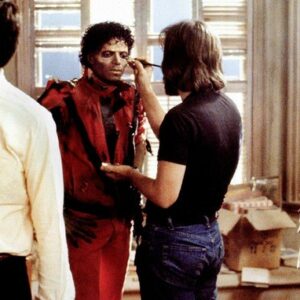The magic of cinema lies not only in its dialogue and narrative arcs but in the subtle details that add layers of depth to each character and scene. One of these often overlooked elements is costume design. In Maggie Gyllenhaal’s directorial debut, The Lost Daughter, the emotional undercurrent of each character is crafted meticulously, and costume design plays a crucial role in shaping this landscape. The film, based on the novel by Elena Ferrante, centers on Leda (played by Olivia Colman and Jessie Buckley as her younger self) and explores themes of motherhood, identity, and regret. However, Dakota Johnson’s portrayal of Nina, a young woman vacationing with her family, introduces another layer of complexity and vulnerability, one that is keenly highlighted through her wardrobe.
Costume design in The Lost Daughter isn’t merely about dressing characters; it’s about revealing their emotional and psychological landscapes. Nina, a beautiful yet conflicted young mother, finds herself at the center of an emotional tension that runs through the film. As we delve deeper into the layers of her character, it’s through the delicate choices in her wardrobe that we truly begin to understand her struggles, desires, and the complex interior life she navigates.
Dakota Johnson’s Role and Character
Dakota Johnson’s Nina enters the film with a sense of effortless beauty and youth. She is the picturesque young mother, seemingly content and carefree, but beneath her sun-kissed exterior lies a woman grappling with deep-seated issues of identity, dissatisfaction, and longing. Nina’s relationship with her daughter is fraught with subtle tensions, and her marriage to her husband (played by Oliver Jackson-Cohen) appears to be more about appearances than true intimacy.
Costume designer Edward K. Gibbon took on the challenge of using wardrobe choices to peel back these layers of Nina’s character, subtly exposing the complexity and contradictions that define her. Gibbon uses fabric, texture, and color to craft a visual language that mirrors Nina’s psychological and emotional states. Her outfits are not merely a reflection of her external beauty but a window into her internal struggles—trapped in a world of societal expectations and personal disillusionment.
Key Wardrobe Choices for Dakota Johnson
One of the most striking elements of Nina’s costume design is the contrast between her outward appearance and the emotional turmoil simmering beneath. Her wardrobe is composed of light, flowing fabrics that reflect the seaside vacation setting—a deliberate choice to evoke a sense of ease and relaxation. However, these garments also carry symbolic weight, offering clues to Nina’s inner emotional battles.
One key outfit that stands out is Nina’s beach ensemble, a light, airy sundress in pale, almost washed-out tones. On the surface, this outfit portrays her as carefree and sensual, perfectly fitting the setting of the sun-drenched Greek island. However, the muted colors suggest a subtle distance between her external beauty and her internal emptiness. The flowing fabric of the dress represents Nina’s desire to break free from the constraints of her life as a mother and wife, yet it clings to her in a way that suggests she cannot escape. The breezy style of her clothing mirrors her outward appearance of ease, but the muted tones point to the deeper emotional conflict—one that Dakota Johnson masterfully brings to life in her performance.
Another notable costume is Nina’s swimsuit. A simple, sleek bikini with minimal accessories, the swimsuit is a representation of her desire for freedom and simplicity. It signals her need for a life less complicated, an existence where she can shed the heavy responsibilities of motherhood and marital obligations. Yet the choice of a dark, understated color for this outfit contrasts sharply with her surroundings, symbolizing the weight of the emotional baggage she carries. The swimsuit, while physically liberating, becomes a metaphor for the emotional confinement she experiences—exposed yet hidden, free yet trapped.
In another instance, Nina wears a flowing cover-up, which, while fashionable and light, almost seems to shield her from the world. This wardrobe choice subtly reveals her defensiveness, her need to protect herself from the vulnerability that comes with being a mother and a woman in a complex emotional landscape. The choice of fabric and the way it drapes over her body mirrors the layers of emotional distance she builds around herself, as she struggles with her sense of self.
Costumes as Storytelling Tools
In The Lost Daughter, costume design is used not only to reflect the characters’ current emotional states but to foreshadow events and reveal deeper layers of the narrative. Nina’s wardrobe evolves throughout the film, echoing the shifts in her relationship with Leda, the film’s protagonist, and the growing tension within herself. As Nina grows more vulnerable and open with Leda, her wardrobe shifts subtly from closed, defensive choices to lighter, more open styles. These changes symbolize the gradual unmasking of her true self—her longing, her dissatisfaction, and her desire to connect with someone who understands her pain.
One particularly significant moment is when Nina’s choice of a bold, vibrant swimsuit later in the film starkly contrasts with her earlier more subdued outfits. This change in color palette symbolizes a shift in Nina’s emotional journey—her desire to reclaim some semblance of control over her life. The vividness of her costume reflects her inner awakening, a moment of clarity, even as the consequences of her choices begin to unravel.
The use of costume as a storytelling tool extends to the way fabric and structure play with the audience’s expectations. Loose, flowing dresses juxtaposed with more structured outfits create a visual dichotomy that represents Nina’s internal tug-of-war between the freedom she craves and the roles she feels obligated to fulfill. Gibbon’s approach to costume design in The Lost Daughter allows the audience to piece together the fragmented puzzle of Nina’s character through subtle, visual storytelling cues.
Collaboration between Costume Designers and Dakota Johnson
Costume design in The Lost Daughter was not a one-sided endeavor. The collaboration between Dakota Johnson and Edward K. Gibbon was key to bringing Nina’s character to life visually. Johnson’s deep understanding of Nina’s psychological complexities informed the design process, allowing Gibbon to craft wardrobe choices that would highlight the nuances of her character.
According to interviews with both Johnson and Gibbon, their collaboration was built on trust and an open dialogue about the character’s motivations and emotional journey. Johnson’s input on how certain outfits made her feel on set was instrumental in shaping the final wardrobe choices. In many ways, the collaboration between actor and designer served to blur the lines between character and performer, as Johnson’s personal insights into Nina’s emotional world were visually mirrored in the costumes she wore.
This partnership highlights the importance of costume design in conveying subtle character details that might otherwise be lost. Each outfit serves a purpose, whether to underscore Nina’s vulnerability, emphasize her defiance, or reveal her emotional fragility. By working closely with Gibbon, Johnson was able to inhabit Nina’s character on a deeper level, using wardrobe as a tool to express emotions that go beyond what is said in the dialogue.
Impact of Wardrobe on Audience Perception
Costume design in The Lost Daughter plays a pivotal role in shaping the audience’s perception of Nina. Through her wardrobe, viewers are able to glean insights into her emotional state without the need for heavy-handed exposition. The choice of muted colors, flowing fabrics, and understated accessories creates a sense of fragility and emotional distance, allowing the audience to understand Nina’s struggle without it being explicitly stated.
One of the most powerful aspects of Nina’s wardrobe is its ability to communicate internal conflict. Dakota Johnson’s character appears, on the surface, to have it all—beauty, youth, and a picturesque family. But her costumes, with their muted tones and restrained elegance, tell a different story. They suggest a woman who is emotionally adrift, struggling to find her place in the world, and weighed down by expectations. The subtle, visual language of her wardrobe allows the audience to engage more deeply with her character’s journey, drawing them into her inner world without the need for words.
In The Lost Daughter, costume design is not merely an aesthetic choice—it is an integral part of the film’s emotional landscape. The visual cues provided by Nina’s wardrobe allow the audience to piece together her complex emotional state, making them active participants in her journey. Through Gibbon’s masterful design and Dakota Johnson’s nuanced performance, The Lost Daughter reminds us that costume design is not just about what a character wears—it’s about who they are, what they feel, and how they navigate the often murky waters of identity and desire.





